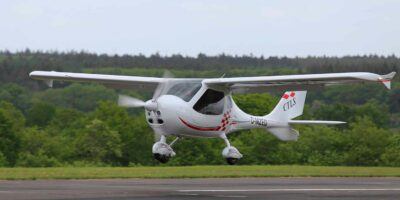The European Aviation Safety Agency (EASA) has launched a consultation for a Basic Instrument Rating (BIR) for private pilots. It’s based on more proportionate requirements and tailored to the need of GA pilots, says the agency.
The way EASA works is to issue a Notice of Proposed Amendment (NPA) and this one is NPA 2016-14. The agency is asking for comments until 31 January 2017 (link below).
The key principles, according to EASA, are:
Training that is entirely competency-based
There will be no minimum hours requirement set for the BIR. All the required competencies that a GA pilot needs for an IFR flight are analysed and grouped into three modules of training. Candidates will progress to the next module or skill test when ready to do so.
Training that is flexible
The core module of instrument flying skills must always be completed first, and after having done so, the candidate may choose which further module to tackle next, within a timescale that suits them. This takes into account the fact that GA pilots may often not have the time or financial resources to commit to a more conventional full course of training towards the IR.
Focus on the practical needs of GA pilots
Holders of the BIR should feel confident to use it to the full extent of its privileges. While IFR flight has many safety advantages, what is central to its philosophy is to assess the risks of a particular flight in a more systematic way. To this end, the training will be focused on the real-world instrument flying needs of GA pilots, with particular emphasis on practical application of threat and error management. This will ensure that the full safety and utility benefits of IFR flight are reaped.
High standards of training and testing
Despite the focus on GA needs, practical training and testing standards will be similar to those of the current Part-FCL instrument ratings, particularly with regard to interaction with other airspace users. It is very important that GA pilots flying under IFR have the required competencies for this.
In the NPA, EASA proposes that the Theoretical Knowledge element of the BIR would have training module supported by an exam incorporating the relevant learning objectives, resulting in a total of three focused exams.
“Learning objectives will not duplicate topics already examined at PPL level, but will focus only on objectives appropriate for the safe operation of GA aircraft in IMC or under IFR,” says EASA.
One contentious point is that EASA says the BIR can only be taught at an Approved Training Organisation (ATO) rather than the newly-created category of Declared Training Organisation (DTO) intended for non-commercial GA pilot training.
The BIR is an additional Instrument Rating to the existing Competency-Based IR (CB-IR) and En route IR (EIR).
LINKS
EASA NPA 2016-14 Consultation
Discussion on Flyer Forum













2 comments
so this is the EASA IMC rating? like we all said that should some 6 years ago !
Finally!
This will increase private pilots skills and bring a huge safety benefit!